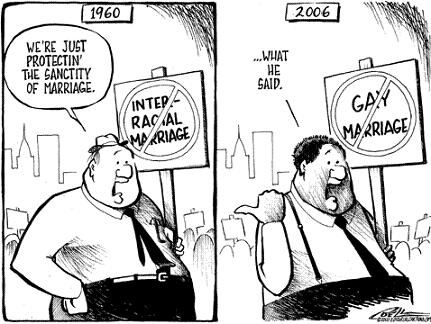Creating Safe Spaces
In "Safe Spaces: Making Schools and Communities Welcoming to LGBT Youth", August does a fantastic job delivering the argument that LGBT youth are not being protected in today's schools. It is the job of educators to protect all students, especially those who are typically marginalized, and most are failing to do so. By neglecting to talk about LGBTQ families and individuals or even going as far as to talk badly about LGBTQ community members, teachers are shaming these students simply for being who they are.
August speaks heavily about integration and interpretation. For our class, this should not be a new concept. Many pieces we have read lay out very similar ideas. In the article we read last week, Christensen mentions the lack of representation of certain groups in media. Certainly the LGBTQ community is under-represented, especially in children's media. However, it is important that children see people and families different from their own because it teaches them to be loving and accepting of all. I think it is safe to assume that many TV and film companies fear backlash if they choose to include LGBTQ people in children's films. In the new Beauty and the Beast film, Disney chose to make the character LeFou a gay man. It is subtle, and certainly most children probably did not even realize it. However, the backlash Disney faced was unreal. I have included a link to an article which talks more about this "scandal". As Christensen says, children are receiving a "secret education". If children never see LGBTQ people in films or TV shows, they are in essence being "educated" to believe that it is wrong to have two moms or it is wrong to love certain people. It is teaching children to be intolerant.
The reading by Collier also relates to August's article because both authors state that we must not teach children that their cultures are wrong but rather embrace them. One of the key points in Collier's article is that in teaching bilingual students, it is extremely important to both incorporate and respect their culture in the classroom. The same is true for LGBTQ students. We must embrace the cultures of LGBTQ students in the same way. We must teach both those students and all students that just because their way of life is different than some of ours does not make it wrong. All cultures are beautiful, LGTQ culture included. As educators, it is our job to relay these positive messages of cultural acceptance in the classroom every day.
QUESTION: As someone who went to Catholic school, LGBTQ themes were NEVER incorporated into the classroom. There was no negative portrayal but that is because there was never any portrayal at all. I am wondering if those of you who went to public school had a different experience? Technically speaking public schools are more inclusive, but are they actually?



Amanda,
ReplyDeleteI really like the way you set up your blog. You made it very easy to read and understand. I like the pictures you incorporated too. I also think the question you raised is SO important. I went to public school, and I felt it was more neutral rather than accepted or denied. I think teachers need to be prepared to support students no matter what. After all, it's their job to help them learn and become successful no matter what. This is such an important question! I hope it comes up in discussion. Great job!
I also went to a public school and I have to agree with Kyra. My school had a very neutral view on LGBTQ. So maybe public schools are more inclusive than Catholic schools but not to to the point to where it should be.
ReplyDeleteHi Amanda, I agree with your post and I like how you connected with the past readings. I also liked your question, it definitely is something to ask because its so different everywhere. unlike the others above, my school tried to be really good with advocating gay-straight-alliance among the students but they had to be very careful about it to not get any parents upset or mad.
ReplyDeleteAmanda, to answer your question, I grew up in the public school system in Seekonk Ma from 2002 to 2015 and I can safely say that until I got to high school there was absolutely no LGBT representation. The only way I learned about it in high school was by observing a couple students who were out as gay or lesbian, and though no one really judged them for it, there wasn't really any integration into the school curriculum either.
ReplyDelete